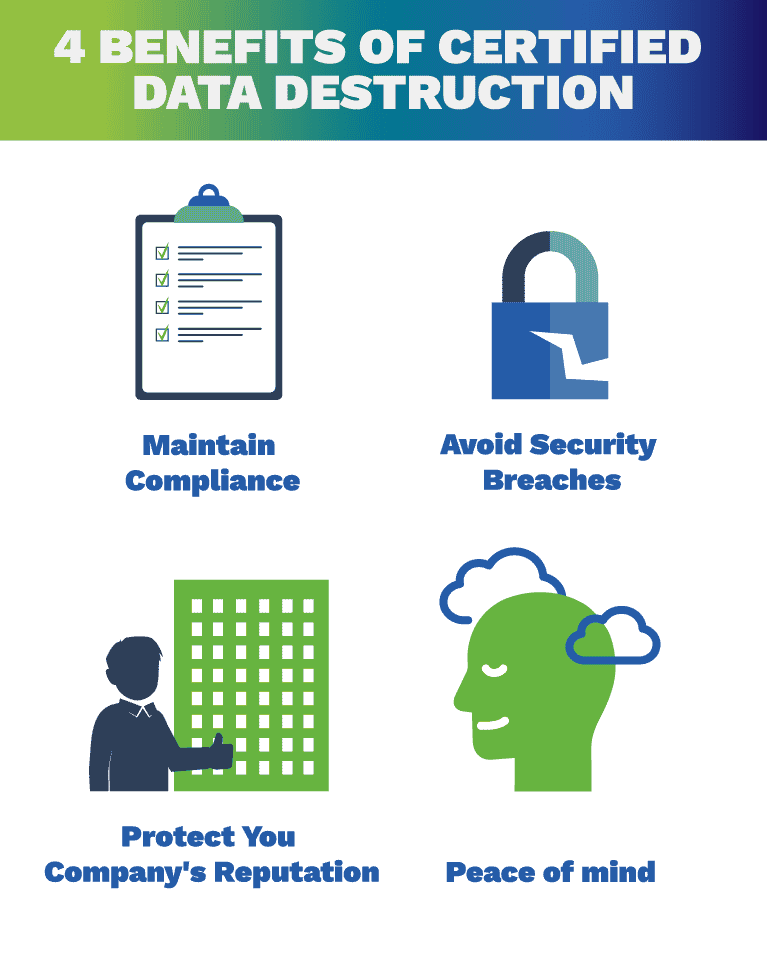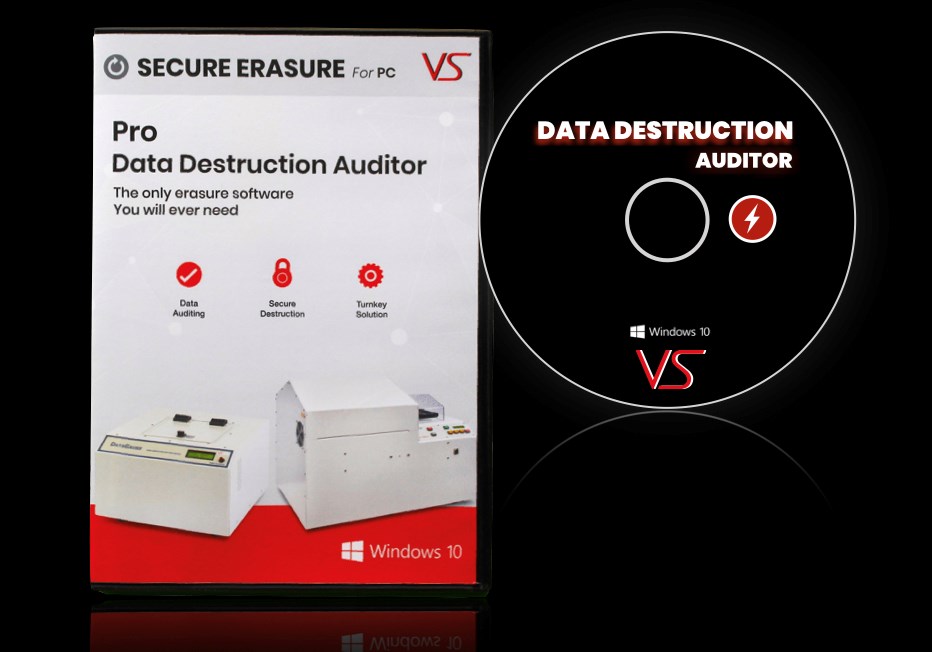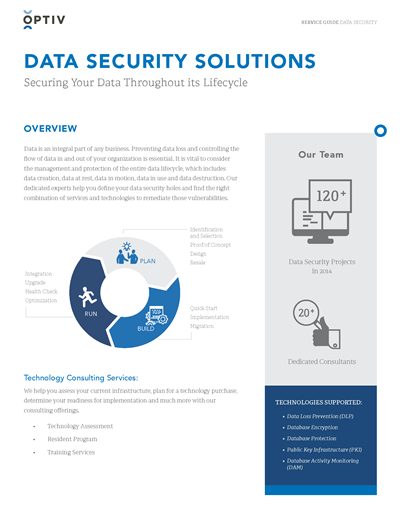The Relevance of Effective Data Damage Practices in Safeguarding Sensitive Info and Ensuring Computer Protection
In a period where data breaches are increasingly usual, the importance of efficient information damage techniques can not be overemphasized. Applying durable data damage techniques not only reduces these dangers but also aligns with lawful compliance demands, guaranteeing that organizations copyright their track record and foster customer count on.
Comprehending Data Destruction
Understanding data destruction is important in today's digital landscape, where sensitive information can easily be compromised. Effective information damage includes not just removing files yet guaranteeing that data is irretrievable via thorough techniques. This process is crucial for companies that manage confidential customer info, intellectual residential or commercial property, or inner records, as any type of breach can bring about extreme economic and reputational effects.
Data devastation encompasses various methods, including shredding physical media, degaussing magnetic storage space gadgets, and employing software-based remedies that overwrite data numerous times. Each approach serves a details function and has to align with the level of sensitivity of the info being thrown away. Physical destruction is often favored for hard drives having very personal data, while software program approaches could be enough for much less delicate information.
In addition, adhering to sector requirements and regulations, such as the General Data Defense Regulation (GDPR) or the Medical Insurance Portability and Responsibility Act (HIPAA), is imperative for compliance and to mitigate lawful threats. Organizations needs to develop a robust information damage policy, train employees on ideal techniques, and regularly examine their treatments to make certain that all sensitive information is disposed of safely and effectively.
Dangers of Inadequate Practices
Poor information devastation practices reveal organizations to significant threats that can have significant effects. When sensitive details is not properly dealt with, it continues to be at risk to unapproved access, which can result in data breaches and identity burglary. Such events not only compromise the protection of people but also tarnish the company's reputation, causing a loss of customer count on and potential economic repercussions.
In addition, regulatory compliance is significantly strict in lots of sectors. Failure to follow information destruction guidelines can cause hefty fines and lawful activities against companies. These fines can draw away and strain monetary sources attention from core organization procedures.
In enhancement, the misuse of residual data can lead to intellectual residential property burglary or company reconnaissance, threatening affordable advantages (data destruction). The impact of inadequate information devastation extends past immediate monetary losses; it can likewise cause long-lasting damage to brand honesty and market position

Organizations have to acknowledge that data security is not exclusively regarding protecting against breaches; it additionally encompasses the liable administration of information throughout its lifecycle. Neglecting effective data devastation procedures can have tragic effects, underscoring the necessity for robust procedures to minimize these risks.
Best Practices for Information Devastation
Implementing reliable information damage practices is vital for securing sensitive information and maintaining conformity with regulative requirements. Organizations should adopt a multi-faceted method to guarantee that data is irretrievable, thereby protecting against unapproved access and prospective violations.
First, information need to be classified based upon sensitivity, permitting organizations to use suitable damage techniques tailored to the level of risk. For electronic information, making use of software-based data-wiping devices that adhere to sector criteria can efficiently overwrite existing data. Physical damage methods, such as shredding or degaussing, are critical for devices that save sensitive information, making sure total removal.
Establishing a clear data retention plan is important, describing for how long various types of details should be maintained before devastation. Regular audits of information storage systems are additionally needed to recognize unneeded or outdated data requiring elimination.
In addition, training staff members on the importance of data damage and the specific protocols to adhere to fosters a society of security within the organization. Maintaining documents of data destruction refines provides responsibility and sustains compliance with interior policies and external laws. By adhering to these finest techniques, organizations can dramatically mitigate the threats related to data direct exposure.
Legal and Compliance Considerations

Failure to adhere to these laws can lead to serious charges, including significant penalties and reputational damages. Organizations has to execute a robust data damage plan that straightens with these lawful structures and gives clear standards on the correct approaches of information disposal, whether physical shredding or digital cleaning.
Moreover, keeping documentation of information devastation tasks is essential for demonstrating conformity throughout audits or examinations. By focusing on lawful and compliance factors to consider, companies can improve their data safety and security pose and foster depend on with clients and stakeholders, ultimately adding to an extra secure information administration environment.
Advantages of Effective Information Devastation
Efficient data devastation methods extend beyond plain compliance; they offer substantial advantages to organizations that prioritize them. By ensuring that delicate information is irretrievably destroyed, companies reduce the risk of information violations and the potential monetary effects related to them. This proactive strategy not just safeguards against unauthorized access Resources however likewise improves the overall about his trustworthiness of the company in the eyes of clients and stakeholders.
Executing durable data devastation methods, such as physical devastation of storage tools or sophisticated information wiping methods, adds to the fortifying of a company's cybersecurity posture. data destruction. It decreases the likelihood of copyright burglary and protects exclusive information, consequently keeping a competitive edge on the market

Verdict
Finally, reliable information destruction practices are crucial for securing sensitive info and boosting general computer system safety and security. By implementing detailed approaches such as shredding, degaussing, and software application overwriting, organizations can minimize the risks connected with unapproved accessibility and data breaches. Adherence to regulative criteria, consisting of GDPR and HIPAA, more enhances conformity and protects against legal consequences. Inevitably, a dedication to durable information destruction approaches promotes a society of duty, thereby reinforcing a company's cybersecurity stance and keeping customer trust.
